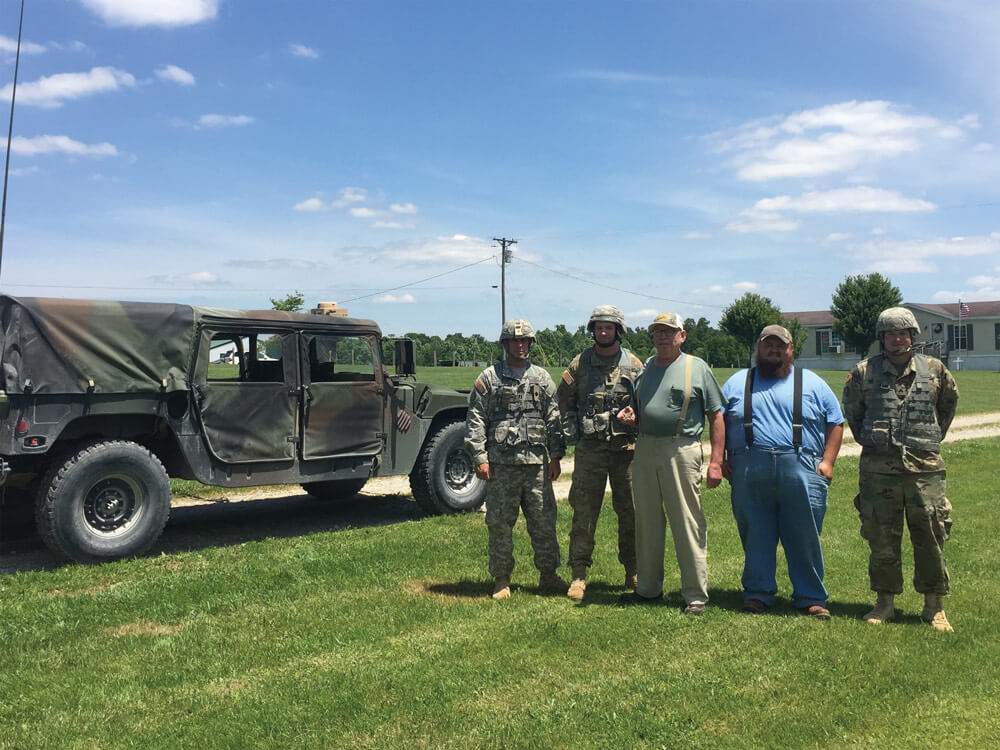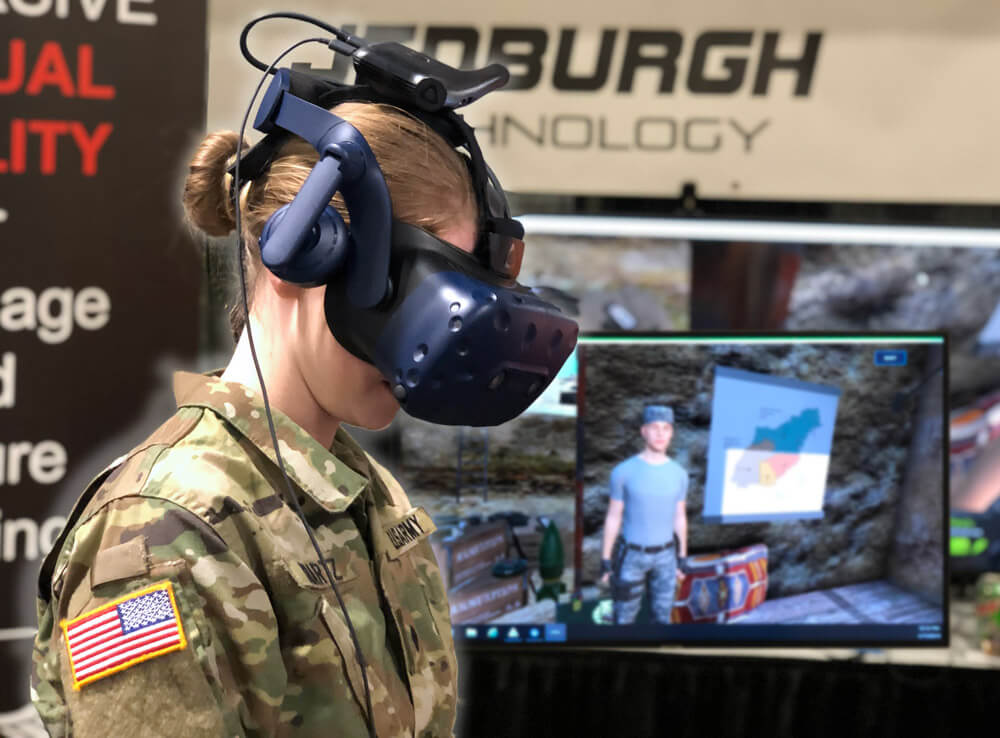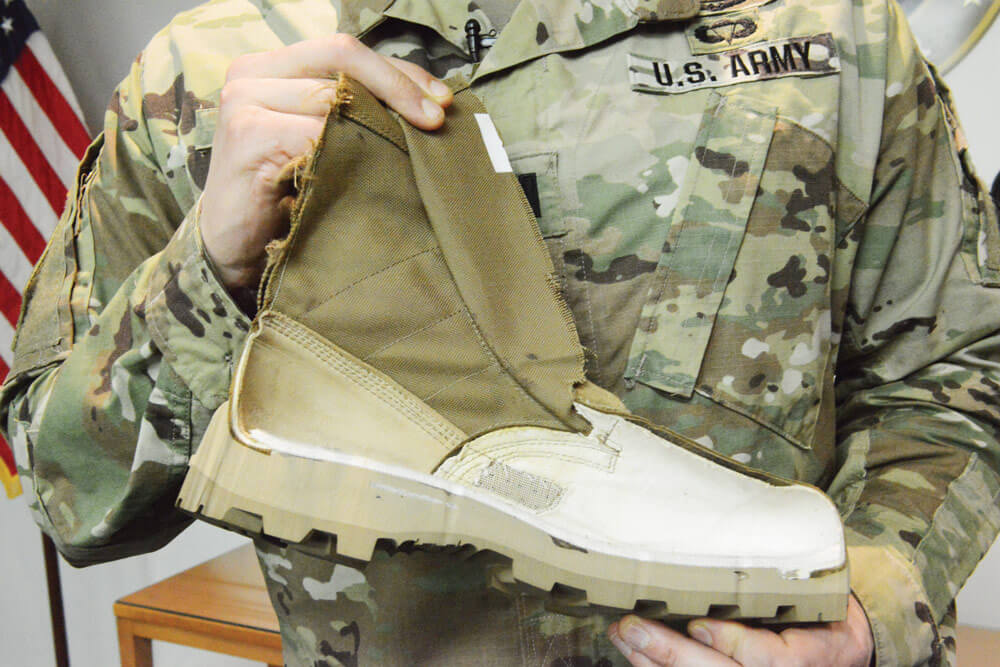This summer, Kentucky Army National Guard Signal Soldiers made history when they successfully completed the longest radio retransmission, using standard-issued radio configuration equipment, on State record.
Referred to as the “Shot Heard Across the Bluegrass,” the radio retransmission (RETRANS) event was a joint Kentucky Army National Guard engagement led by CPT Stephen Young and SGT Jackson Gudgel with the 138th Field Artillery Battalion. The team consisted of Soldiers from the 138th Signal Company and the 63rd Theater Aviation Brigade.
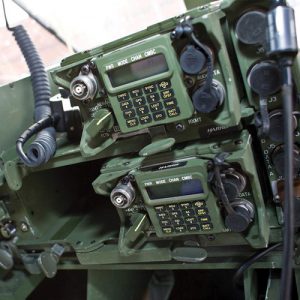
For the event, Soldiers established a radio network using the standard unit-issued Single Channel Ground and Airborne Radio System (SINCGARS) to link Fort Knox and the Wendell H. Ford Regional Training Center (WHFRTC). SINCGARS is a combat net radio currently used by U.S. and allied military forces. First developed in the late 1980s, the SINCGARS systems replaced the Vietnam War-era synthesized single-frequency radios. The radios, which transmit voice and data communications, are designed to be reliable, secure and easily maintained. SINCGARS uses 25 kHz channels, ranging from 30.000 to 87.975 MHz, in the very high frequency FM band. The system has both single-frequency and frequency-hopping modes.
“We did the retransmission during our two-week annual training at Fort Knox,” said SGT Terrence Daniels with the 138th Signal Company. “It was about 135 kilometers [approximately 90 miles]. It’s amazing. There’s no one else in the Kentucky Guard who can say they did this.”
Accomplishing such a feat required intricate planning and precise execution. For a radio to transmit such a long distance, a RETRANS center must be used. A RETRANS center includes antennas and radio setups between two locations – in this case, Fort Knox and the WHFRTC – in order to transmit the signals.
“We all had a team of two or three individuals, and we would set up antennas and radio retransmissions at certain distances in between the locations,” SGT Daniels explained.
To choose the RETRANS sites, Soldiers had to examine the area between the locations and map out the best positions. Some of the ideal positions fell on private property, so Kentucky’s Citizen-Soldiers partnered with the local citizens to get the job done.
“CPT Young, SGT Gudgel and I went out speaking to locals, asking them if it was okay to set up RETRANS on their property,” SGT Daniels commented. “Most people were really excited about it and were very open to [being a part of the event].”
“Our first RETRANS site was a private house,” said CPT Young. “We knocked and a gentleman came out who was a Veteran and a very nice guy. He said, ‘Sure, if you want to set an antenna up, set an antenna up!’ So, that was our first site.”
SGT Daniels and his team stayed overnight at another RETRANS site. There, they engaged with several curious locals.
“We stayed there with our trucks overnight and it was good to be with the community,” SGT Daniels said. “Some kids and their family members came to take pictures by the truck and ask questions. You know, you see this big 10-foot antenna in the air and a lot of people want to know what’s going on. It was good to have Soldiers get exposure to the community and have people see what we do.”
Creating the historic “Shot Across the Bluegrass” took only two days – one day for recon and the second day for completing the mission.
The RETRANS was especially significant not only because it was the longest radio shot in State history, but also because it was the first time Kentucky’s Signal Soldiers tried to achieve this type of network.
“This was our first attempt at it and we [successfully] completed it,” CPT Young said.
Accomplishing the mission showed that common problems with communication can be tackled using basic equipment issued to all units. The mission also illustrated the possibility of extending basic equipment beyond what has been done in the past.
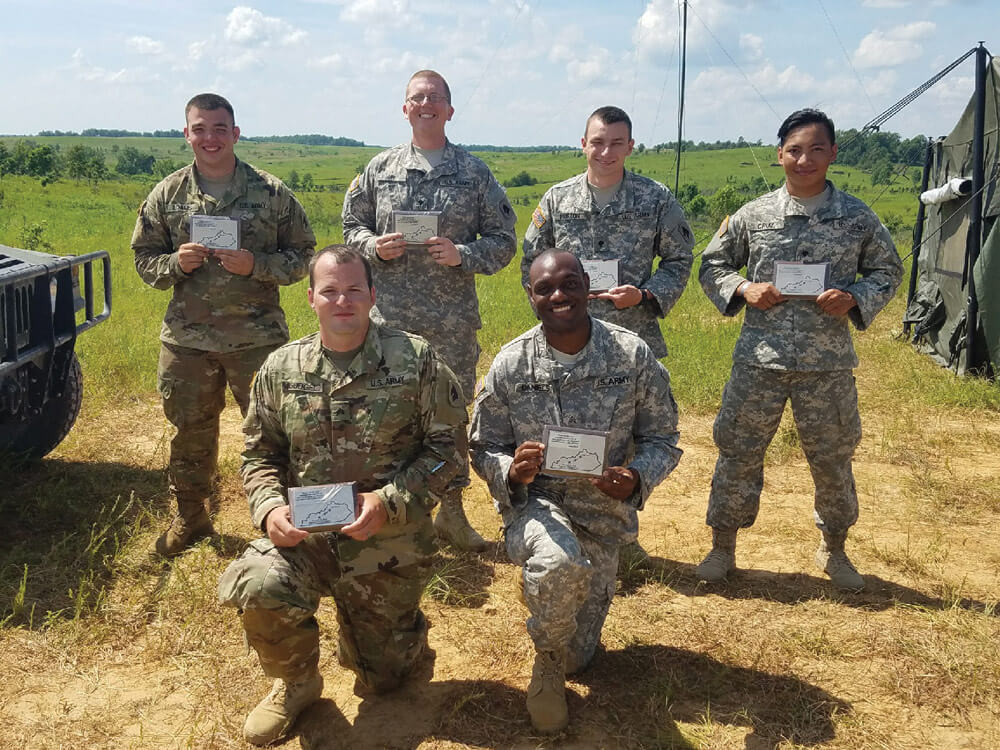
“When we go to mobilization stations, often the very first problem [we encounter] is that ‘we can’t talk’, [the equipment] cannot span the distances,” CPT Young explained. “We lose communication and we think this shows that the equipment does not work. But in actuality, we need to have a bit more confidence in the equipment. [Soldiers] need to practice using basic skills and equipment. They know how to use them – they just need to use them more often.”
While the connection was successfully made between Fort Knox and WHFRTC, the mission was not without potential roadblocks.
“It’s always a challenge when you have that many pieces of equipment and that many Soldiers,” CPT Young said. “You always have the safety of the Soldiers to worry about, especially when you are ranging more than 90 miles line of sight. That’s about 130 miles given the road and time it takes to get from A to B. Anything can go wrong, but it was planned out very well. We had extra pieces and parts, and we had additional support from the leadership.”
SGT Daniels noted that the intricacy of the mission led to a few minor glitches. “It’s all about positioning,” SGT Daniels explained. “Hilltops, trees, anything can be [an obstacle]. We had hiccups like static through the lines and not being able to hear the other [end of the line]. There was a lot of troubleshooting. About 45 minutes before we were going to test, there was a lot of static buildup. We couldn’t figure out why, because on our earlier checks everything was crystal clear. It’s so funny – when they did the actual RETRANS, it was the clearest it had ever been.”
The successful exchange was made by MG Stephen Hogan, Kentucky National Guard Adjutant General, and SGT James Hall with the 63rd Theater Aviation Brigade. To honor the historic exchange, CPT Young rewarded his team with plaques commemorating the mission.
“They were so proud of their accomplishments,” CPT Young said. “Their confidence level shot up. They were all smiles and you couldn’t have brought them down if you wanted to. They were a part of something big and they didn’t know how big until six publications picked up the story. They just didn’t realize how big of a deal it was.”
“The mission was very important to us. We took it very seriously,” SGT Daniels said. “It was something that we trained in and could actively show the impact. To see it promoted the way that it was and have the strength that it did – that was really big.”
CPT Young credits the success of the mission to his dedicated team of Soldiers.
“It was really their accomplishment,” CPT Young said. “A lot of behind-the-scenes planning went into it that they’ll never know about. But when they are out there beating their heads against some of that equipment, it’s for them. Some of them said they had never heard of this, let alone done it. So, when they can go and say, ‘I’ve been a part of this – this is how we did it’, the next generation of Soldiers can see that it’s been done and want to make things happen.”
SGT Daniels said he believes this mission will educate Soldiers about the potential uses this communication development opens up.
“I think it educated different units, that aren’t signal units, about how far they can get their communications to go,” SGT Daniels explained. “For infantry units or field infantry units who have to go further out from their hub or from their command, they now know that they can get RETRANS to transmit farther and still have a secure line to communicate, as opposed to using cell phones. That way you can create more of an in-country or battlefield environment. If you were out on deployment, you wouldn’t have iPhones or Androids. Being able to see the actual military equipment do its job at a distance that far is a very big win.”
In terms of the future, CPT Young hopes to continue on the path of evolving standard communication techniques and making sure those techniques are passed on to the future generation of Soldiers.
“The next step is just continuing on,” CPT Young said. “We’ve done what people said has never been done. Now we need to do it faster. We’ve already proven that we can talk those distances so now we have to make sure those skill sets don’t perish. Those are perishable skills. You forget things, you forget those little pieces. If we can teach those next teams ‘this is what you need to do to roll out faster,’ then we are in a good place.”
By Staff Writer Tatyana White-Jenkins
